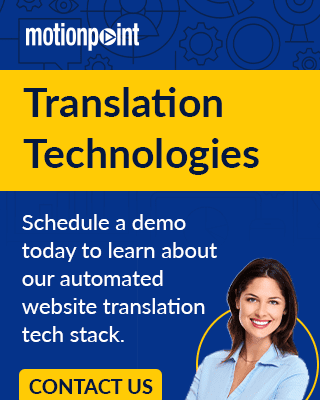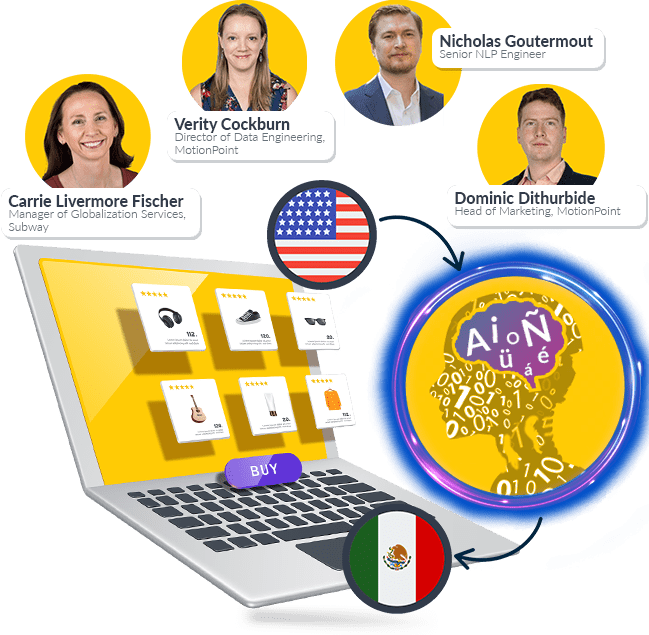Companies wanting to reach customers in different languages must adapt their content to suit their preferences. Automatic translation plays a major role and goes beyond the instantaneous conversion of one language into another. Learn how to leverage automatic translation for your website translation projects.
What is Automatic Translation?
At first glance, the terms "automatic translation" and "automated translation" seem very similar. There are subtleties to the phrases, however.
The word “automatic” means operating without controls. On the other hand, “automated” means operating with external controls. It uses software or tools to be more efficient.
Automatic translation is an all-encompassing process in a translation workflow. But, how is it supported, and who supports this process? It's all through automation.
“Automatic” or “Automated” Translation?
At first glance, the terms “automatic translation” and “automated translation” seem very similar. There are subtleties to the phrases, however.
The word “automatic” means operating without controls. On the other hand, “automated” means operating with external controls. It uses software or tools to be more efficient.
"Automatic" translation is for proxy translation. MotionPoint's "hands-off" proxy approach needs minimal effort from people. "Automated" translation includes the integration of translation processes that people must manage.
There are multiple possible automations within the realm of automatic translation. Consequently, automatic translation can simplify the translation workflow in various ways.
Automatic Translation vs. Machine Translation
Automatic translation includes all aspects of complex translation technologies and systems with automated triggers between languages. Machine translation translates content between languages without humans, unlike text simplification.
Google Translate and DeepL
Google Translate and DeepL employ machine translation, but people do not consider them automatic translation. Automatic and machine translations are not interchangeable terms, as they serve entirely different functions. Machine translation is an automated tool used in the automatic translation process.
DeepL is a translation platform that employs AI technology and artificial neural networks to offer language translations. These neural networks undergo training to generate translations that exhibit contextual understanding and subtlety.
Google Translate relies mainly on neural machine translation (NMT). This technology facilitates the conversion of text, documents, and websites from one language to another. Users simply input the text they wish to translate, select their preferred language pair, and the translation promptly appears.
Automatic Translation Technology: How We Automate Translation
Machine translation supports the essential translation of language, while automatic technology fosters the translation process from beginning to end. This includes identifying new content for translation. MotionPoint uses automatic translation technology to increase translation efficiency, from content translation through publishing. MotionPoint's automatic translation technology handles the following:
- Finds new content to translate using MotionPoint’s web crawler, better than humans searching for updates.
- Assigns detected new content to a linguist for translation. This keeps the translation process moving smoothly, and ensures the content will have the most knowledgeable people updating it.
- It disregards standardized, flagged content that must remain unchanged, regardless of the language into which the content is translated. Examples of content that remains consistent include product or brand names, company logos, catchphrases, or slogans.
- Translates and publishes on the correct domain, ensuring your website is up-to-date and accurate.
- Saves time and effort by reusing translated content from Translation Memory, avoiding retranslation and allowing for easy updates.
Automated Translation Workflows
The automated translation workflow progresses depends on the translation technology you’d like to utilise. A translation workflow is a system that supports and moves the translation process forward. A translation management system (TMS) supports this workflow by using automated machine applications for translation.
MotionPoint's translation solutions are directly related to the earlier translation workflows. MotionPoint's proxy translation approach demonstrates automatic translation technology. A translation proxy is a tool that translates your website's content in real-time. It allows people from different countries to view your website in their own language.
Proxies are servers managed by MotionPoint. They get content and translate it in real-time. They use machine translation or approved translations.
Then, they show the translated content to users on your website. It's quick and completely automatic.
MotionPoint’s translation integration approach supports the process with connectors, application programming interfaces (APIs), or plugin technology. When using integration technology, people must decide between automatic translation or having a linguist review each content piece. Automated website translation and integration controls how automatic you want the process to be.
What is Translation Memory?
Translation memory (TM) is a database that stores original and translated content for a language pair in translation units or segments. TM eliminates redundant translation of relevant segments. We translate the content once, save it in TM, and reuse it as needed.
Automatic translation triggers the translation memory when it flags segments that register as untranslated for translation. On the other hand, the multilingual website instantly publishes other translated content.
Real-Time Quality Assurance and SEO Considerations
To guarantee precise translation, it’s crucial to have real-time quality assurance or testing for any multilingual website translation. This includes testing a localized website utilizing required browser or operating system combinations to ensure the multilingual versions of your website don’t have linguistic, cosmetic, or functionality issues.
SEO is important because keywords vary between English and other languages. Additionally, word substitution should not be confused with translation. A professional translation service can provide the best keywords for native language SEO automatically.
Continuous Translation
These automatic translation processes are linked to continuous translation. This process uses automation to handle and adapt content using software, the steps in making a professional translation. This is the top translation process that combines all elements to keep it running smoothly and continuously.
Start Automating Your Content Translation
Automating content translation can launch your translation projects further than ever. MotionPoint is a localization company that offers several content translation solutions for websites, mobile, and multimedia assets.
MotionPoint’s website translation technology automates the translation workflow, helping businesses expand quickly in new markets and languages. MotionPoint has the right translation solution for your business, no matter your budget or multilingual goals.
Last updated on June 01, 2022



